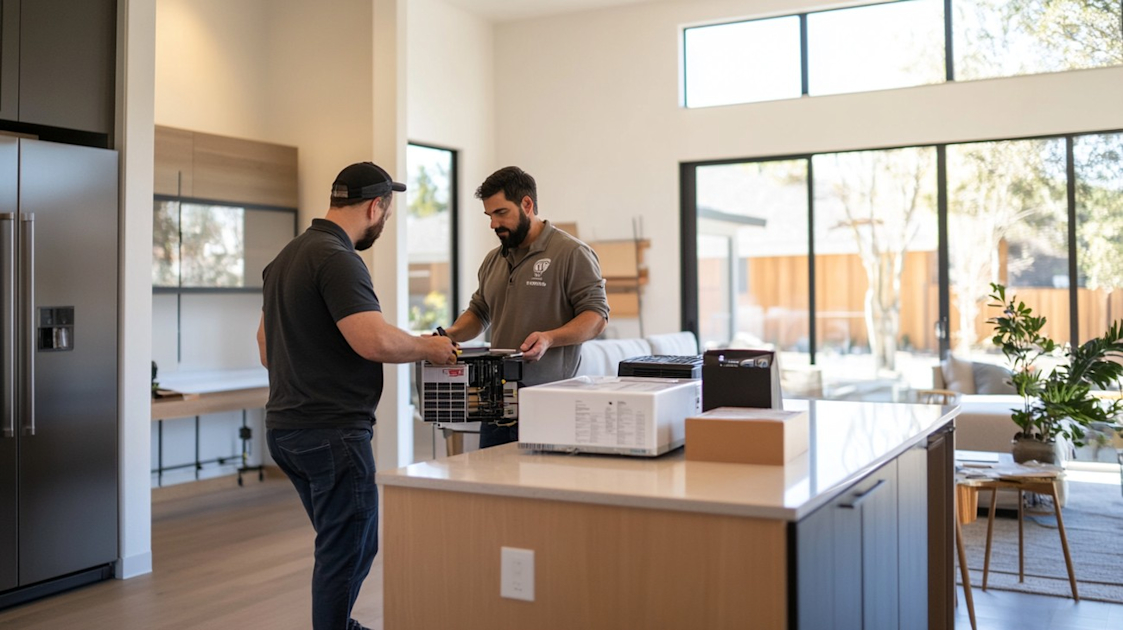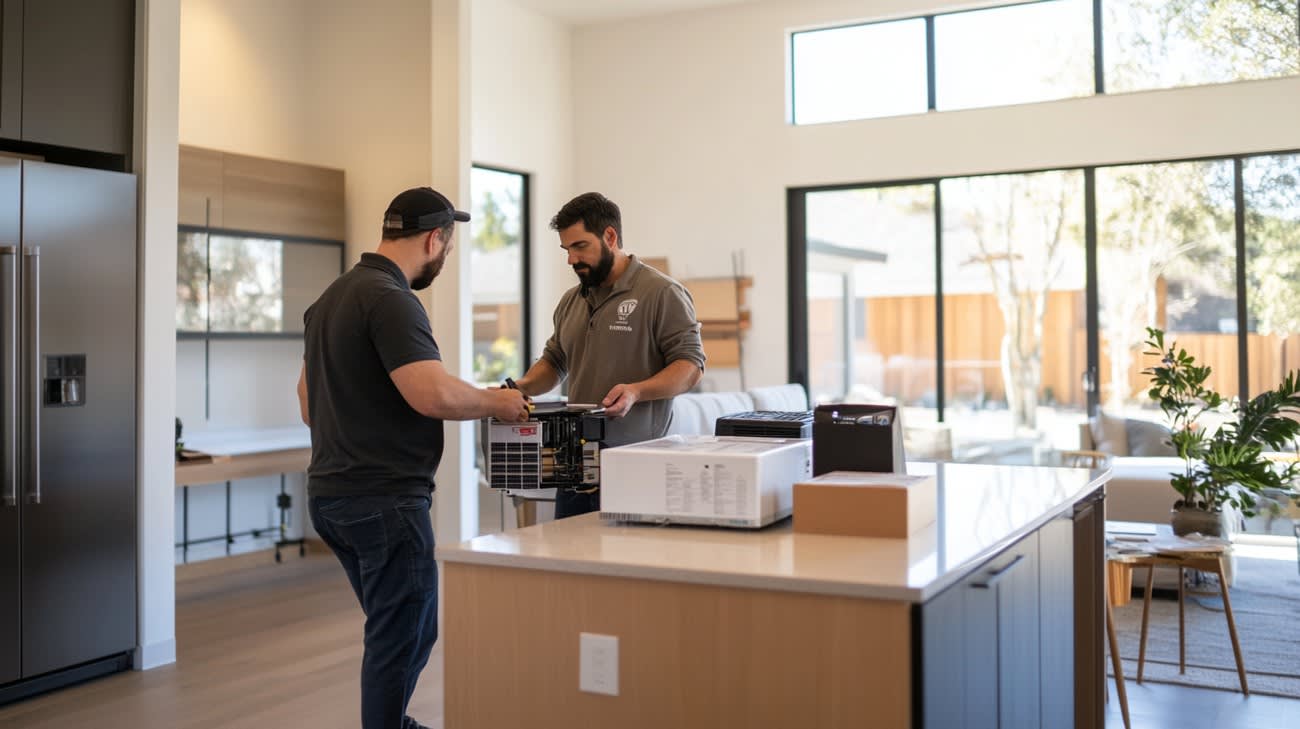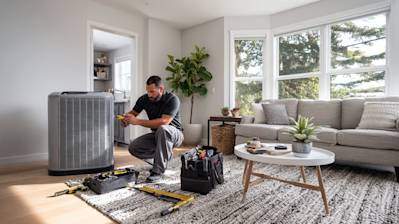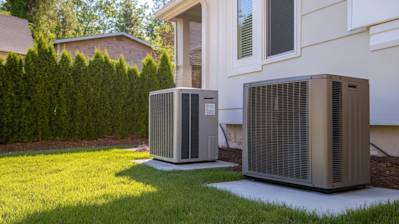Installing a heating system in your home not only provides comfort in the chilling winters, but it also enhances your property's value. As a homeowner, there comes a time when you will need to equip your home with an appropriate heating system or replace the old one. Today, we delve deep into the world of heating system installation.
The Importance of a Proper Heating System Installation
Undoubtedly, a correctly installed heating system presents numerous advantages. First and foremost, a well-installed heating system operates efficiently, providing the necessary warmth to every corner of your house. It also helps in energy conservation, thus lowering your energy bills. Lastly, a flawlessly installed heating system usually requires less frequent repairs and serves you longer, thus saving costs in the long run.
Types of Heating Systems Suitable for Installation
Before delving into the precise steps of heating system installation, understanding the different types of heating systems is essential. In the HVAC industry, heating systems come in diverse forms, each with its operational principles, energy efficiency rates, and installation complexities. Here are a few you can consider:
Forced Air Systems: These utilize ducts and vents to distribute heated air throughout your property. They are compatible with both natural gas and electricity.
Radiant Heating Systems: These leverage heated water to generate warmth. The heated water, concealed beneath the flooring, emits heat that ascends to warm the room.
Steam Radiant Systems: These utilize either electricity or natural gas to create steam, which rises via radiators to heat your home.
Geothermal Heating Systems: These leverage the consistent ground temperature to pump heart into your house.
Choosing the right system depends on individual needs, the climate of the location, and the available budget.
Aspects to Consider Before Heating System Installation
Before proceeding with the task of heating system installation, certain factors need addressing:
Size of the Home: Larger homes require robust heating systems or multiple units to distribute heat effectively.
Existing Ductwork: If your house already has ductwork, it might be economical to opt for a forced-air system.
Fuel Type: The availability of fuel type in your locality can narrow down your options.
Budget: The cost to buy and install varies from one heating system to another. Evaluate your budget to see which you can afford.
Energy Efficiency: High-efficiency systems may be costlier to install, but they promise reduced energy bills over their lifespan.
Essential Steps For Successful Heating System Installation
In this section, we outline the main steps that one should expect during heating system installation:
Assessment and Removing the Old System: An HVAC professional will examine your home, measuring insulation levels, counting windows and evaluating their quality, determining the home's heat loss rate, and removing the old heating unit meticulously.
Choosing the Right Heating Unit: Using the information from the initial assessment, the HVAC expert will guide you in choosing the most suitable heating system.
Installation of New Heating System: The physical installation process depends on the type of heating system you selected. However, this generally involves setting up the main unit, connecting it to your fuel or power source, and, if required, installing ductwork or radiators.
Checking for Correct Installation: The HVAC professional ensures that the newly installed heater is working correctly, optimally adjusting the system for maximum efficiency.
Importance of Professional Installers
A heating system is a significant investment, and its installation isn't an easy DIY task. Here's why hiring professionals for heating system installation is crucial:
Skills and Experience: Professionals possess specialized skills, training, and experience to handle different heating systems.
Time and Cost Efficiency: Professionals know how to execute the installation promptly and efficiently, eliminating the risks of unnecessary costs due to improper installation.
Enhanced Safety: Qualified technicians understand the potential hazards related to heating system installations and know how to avert them, hence ensuring your family's safety.
Guaranteed Workmanship: Professionals usually offer warranties on their work, giving you peace of mind in case of unexpected breakdowns or issues after installation.
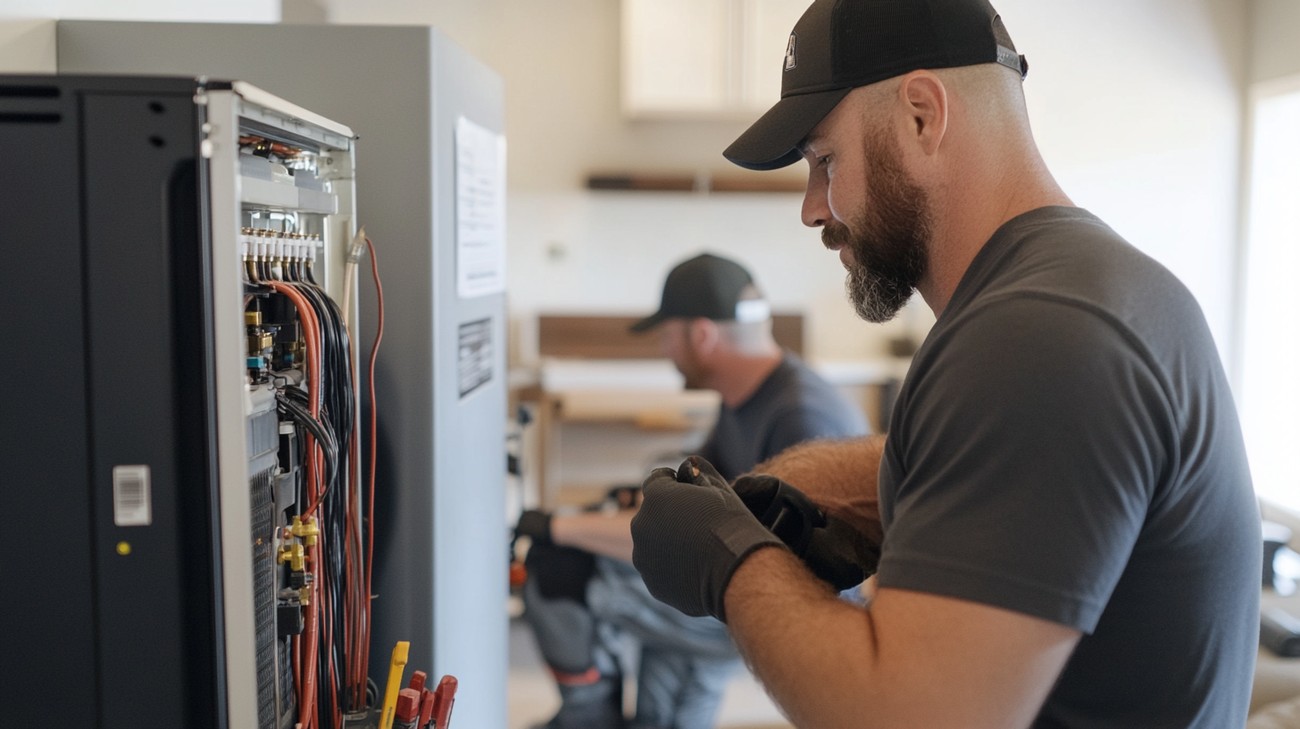
Frequently Asked Questions about Heating System Installation
How much does heating system installation cost?
The cost of a heating system installation can vary greatly depending on several factors. These factors include the type of heating system you're installing, your location, the size of your house, and whether or not previous heating infrastructure is already in place. It is always advisable to get quotations from multiple installation professionals to get a realistic cost estimate for your specific situation.
What are the multiple types of heating systems I can install?
There are various kinds of heating systems you can choose from, each with its own set of advantages. The most common heating systems include forced air systems, electric heat pumps, radiant heating, geothermal heating systems, and boilers or hot water systems. Your choice will depend on your specific needs and budget, your home size, and the local climate.
What factors should be considered when selecting a heating system?
When choosing a heating system, you should consider its efficiency, cost, the size of your home, and your local climate. Additionally, aspects such as the system's maintenance needs, its durability and reliability, and potential utility rebates should also influence your decision.
How long does a heating system installation take?
Typically, a heating system installation will take one to two days, but it can take longer depending on several factors. These factors include the complexity of the system, the size of your property, and whether this is a replacement or a first-time installation.
How often does a heating system need maintenance after installation?
To keep your heating system running optimally, it's essential to have routine maintenance. As a general rule, your heating system should be checked and serviced by a professional at least once a year. Regular maintenance can help prevent unwanted breakdowns, increase the system’s lifespan, and ensure your system operates as efficiently as possible.
Is it possible to install a heating system on my own?
While it may be tempting to try and install a heating system yourself, it is not recommended. Heating system installation involves complex procedures that need specialist knowledge and tools. Additionally, improper installation can lead to inefficiency, system failures, and could potentially be dangerous. It's always best to leave the installation to licensed and insured professionals.
Can I replace only part of my heating system?
Yes, it's possible to replace only part of your heating system. However, it is often more cost-effective and efficient to replace the entire system, particularly if your existing system is old or has been experiencing frequent problems. A professional can assess your specific circumstances and needs and provide the best advice for your situation.
Will a new heating system installation increase my property value?
Generally, a new, efficient heating system can increase your property's value and appeal to potential buyers. Energy-efficient homes are increasingly attractive in the real estate market, and a modern, effective heating system can be a notable selling point.
Can I get a tax credit for a new heating system installation?
In some regions, tax credits are available for the installation of certain energy-efficient heating systems. It's worth checking what's available in your area and considering this when choosing your new heating system.

Pros of Heating System Installation
Improved Comfort
Installing a heating system significantly boosts the overall comfort level in your home. Regardless of the external conditions, you can always maintain a cozy and warm atmosphere indoors. This implies that you can carry on with your indoor activities such as sleeping, eating, or reading without experiencing discomfort from the cold.
Health Benefits
Cold conditions often aggravate health problems such as respiratory issues, heart diseases, and joint pains. Installing a heating system reduces the risks of these health challenges by providing consistent warmth. This helps to prevent cold-induced illnesses like the common cold, flu, and pneumonia that can be detrimental, especially for young children, senior individuals, and those with weakened immune systems.
Energy Efficient
A powerful and modern heating system is highly energy-efficient. Old models of heaters tend to waste a lot of energy, thus increasing the electricity bills. However, with advanced technology, the new heating systems use less energy to heat up a house, which eventually leads to decreased energy costs.
Increases Property Value
The installation of a heating system could considerably enhance your property's market value. Potential homebuyers perceive a quality heating system to be a substantial plus since it saves them from incurring installation costs in the future. Therefore, you might realize a higher resale value for your property upon selling it.
Cons of Heating System Installation
Installation Costs
While a heating system is a beneficial addition to your home, it can come with considerable installation costs. Depending on the type of system, brand, and capacity, you might need to part with a significant amount of money upfront. Moreover, professionals who are qualified to install such systems often charge hefty fees for their services.
Regular Maintenance
Heating systems need regular check-ups and maintenance to ensure they run efficiently. This could involve cleaning, replacing worn-out parts, checking the system for leakages, etc. If you disregard this maintenance, you risk damaging the system or reducing its lifespan significantly.
Can be Noisy
Although heating manufacturers strive to make systems as quiet as possible, some models can still make noticeably loud noises while operating. This might cause disturbances, especially during quiet hours, and thus might not be the best option if you value immense peace and quiet.
Requires Space
Heating systems, especially central heating systems, require adequate space for their installation. Depending on your house layout, this might mean sacrificing valuable room within your home. For smaller apartments or homes with limited space, it might be challenging to install the system without disrupting the general home layout.
Energy Consumption
While modern heating systems are energy-efficient, they still consume a considerable amount of power compared to not using one at all. If you live in an area with high electricity costs, you might end up with soaring utility bills, especially during the cold seasons. Therefore, the overall energy consumption of heating systems can be a downside.

Myths and Misconceptions about Heating System Installation
The process of heating system installation is shrouded with many misconceptions and myths. Oftentimes, these can deter homeowners from making informed decisions that could improve their home’s comfort, energy efficiency, and safety. This section aims to dispel these misconceptions and encourage more accurate conversations about this important household process.
Myth 1: You Can't Install a Heating System in an Old Home
The Reality
It's true that older homes were built with different methods and principles as opposed to modern ones. However, this does not mean they are not suitable for modern heating systems. Trained professionals can assess your home's unique architecture and find the most appropriate heating solution. Usually, it involves strategizing about the placement of ducts in less obtrusive places or opting for ductless systems.
Myth 2: Bigger Heating Systems are Always Better
The Reality
A larger heating system does not necessarily equate to a better performing one. While a bigger system can pump out more heat, it often leads to frequent cycles on and off, a phenomenon known as short cycling. This can wear out the system's parts faster, use more energy, and result in inconsistent temperatures in your home. Your heating system's size should rely on factors like the sizes of your rooms, insulation levels, and local climate.
Myth 3: Installing a Heating System Yourself Saves Money
The Reality
While some people pride themselves on their DIY prowess and rely on tutorial videos for installing heating systems, this can prove to be a financial risk. Improper installation can not only damage the system but can be hazardous. You could also void the warranty of your system. Professionals have specific tools and extensive training to install heating systems properly and safely.
Myth 4: Once Installed, a Heating System doesn't need Maintenance
The Reality
No matter how well-installed a heating system might be, it will require regular maintenance to operate correctly. Like any machine, parts wear out and need replacement, and regular inspections can help identify potential problem areas before a breakdown occurs. Skipping these professional inspections and maintenance can lead to higher energy bills and a shorter lifespan for your heating system.
Myth 5: All Heating System Installation Companies Provide the Same Service
The Reality
While it's tempting to assume that every company that offers heating system installation services is on par, this isn't the case. Various factors distinguish different companies, including their rates, reliability, experience level, and customer service quality. It's essential to do your homework and read reviews or ask for recommendations before choosing a company to install your heating system.
Myth 6: The Cheapest System will Save you Money
The Reality
While everyone loves a good bargain, it's vital to understand that cheaper heating systems often equate to lower quality. More economical systems may lack energy efficiency, meaning they could potentially be more expensive in the long run due to higher utility bills. It's worth investing in a quality, energy-efficient heating system that can truly save you money over the lifespan of the device.
Myth 7: Heating Systems Only Need to be Replaced when they Break Down
The Reality
This myth can lead to discomfort and higher costs. As heating systems age, their efficiency declines, resulting in higher energy consumption and inadequate heating performance. Replacing your system before a total breakdown can result in energy savings and improved comfort.
Myth 8: The Location of Your Heater Doesn’t Matter
The Reality
Where your heating system is installed in your home can have a substantial impact on its efficiency and performance. A well-planned location could ensure better heat distribution and prevent energy loss. This is another reason why it's crucial to rely on professional advice when considering a new installation.
Understanding these common misconceptions about heating system installations can arm you with the knowledge you need to make smarter, more informed decisions when installing or replacing a heating system in your home.
Summary
Installing a new heating system can significantly increase the comfort and efficiency of your home. The process can be complex, but with a professional heating system installation, you can rest assured that it's done correctly and safely. It's a long-term investment that can not only make your house more pleasant to live in, but also increase the value of your property, showing potential future buyers that you've made smart, energy-efficient choices.
Despite the immediate costs, getting a heating system installation can result in long-term savings on your energy bill. An efficient new system can help to significantly reduce energy costs, which can offset the initial expense over time. Plus, with a system that's properly sized for your space, it can work at its most effective, reducing wear and tear and potentially extending its lifespan.
To sum things up, heating system installations are something that can make living in your home a breeze during the cooler months. An expert installation ensures that the system works efficiently and safely, reducing potential risks and saving your hard-earned money on energy costs. While the upfront cost might seem daunting, the energy savings, increased comfort, and added home value make it well worth the investment.
About AirFlow Heating & Air
AirFlow Heating & Air is a Sacramento, CA-based company that specializes in providing top-notch heating and air conditioning services. We are proudly local, understanding the unique needs of California residents when it comes to maintaining a comfortable indoor environment. With a team of highly skilled and certified technicians, we have been providing reliable solutions for heating and air conditioning systems of various makes and models. Known for our excellent customer service and commitment to quality, AirFlow Heating & Air has earned the trust of countless Sacramento residents. We're more than just a service provider; we're your friendly neighborhood comfort experts.

